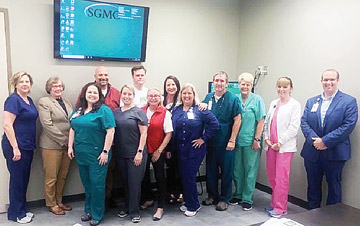When our chief medical officer joined our daily safety huddle one morning, I saw a golden opportunity to get our smoke-free OR program off the ground. I'd been trying to get in front of the CMO for a while and, even though I'd only been at my position for a few months at that point, I wasn't shy. More importantly, I was fiercely passionate about smoke evacuation, so I walked right up and said, "I've been trying to meet with you because we need to talk about getting smoke out of our ORs." He initially thought I was trying to sell him on a specific product, but once he saw I was approaching him purely from a safety perspective, we were off and running.
Since that memorable interaction, our facility has made great strides in going smoke-free. On September 1, 2019, our campus decided to go tobacco-free. We wanted to capitalize on the momentum and excitement the move generated at our facility and approached leadership with a simple ask: "If we're really serious about going smoke-free, shouldn't we extend our smoking ban to the OR?" After all, the vapor from smoke plume contains formaldehyde, ethanol, methane, carbon monoxide, cyanide, known-carcinogen acetaldehyde and 150 other chemicals and toxic substances. For perioperative staff, a day in surgery is essentially the same as smoking more than a pack of unfiltered cigarettes.
Of course, we just happened to be perfectly positioned to align our smoke evacuation efforts with a major campus-wide initiative to go smoke-free. Most smoke evacuation initiatives don't line up quite so well. That's OK. The key is timing your efforts and launch dates to have the maximum impact on the maximum number of stakeholders.
.svg?sfvrsn=be606e78_3)


.svg?sfvrsn=56b2f850_5)